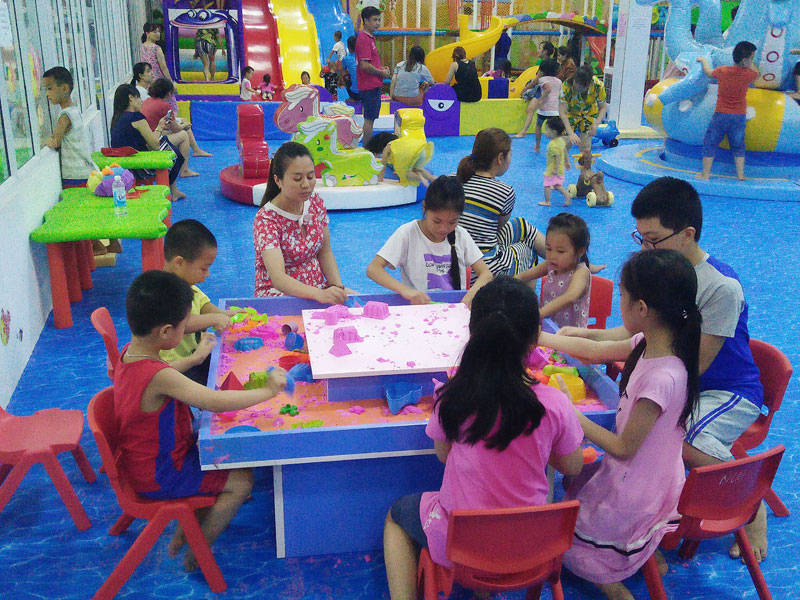
(HBO) – Children in Hoa Binh city flocked to entertainment areas during summer vacation.
The newly-built Tue Minh entertainment area (Su
Ngoi commune, Hoa Binh city) draws a large crowd of children.
After two years of operation, Hoa Binh square
has become a popular destination for families across the city because it is
clean, spacious and has a big parking area.
Apart from Hoa Binh square, there is an outdoor
entertainment area for children in the campus of Hoa Binh schooling equipment
book company in Tan Thinh ward. Kindergarten and primary school children could
join various kinds of games such as driving electric cars, fishing, experiencing
speed train and merry-go-round.
Lying in the centre of Hoa Binh city, the
entertainment area at AP Plaza trade centre is a popular place for children
across the city. Businesses have recently upgraded the area and bought new toys
to attract more children.
To increase competitiveness and draw more
visitors, the area has offered discount tickets from 50,000 VND per kid and
20,000 VND per accompanying adult to 50,000 VND for both kid and accompanying adult.
Despite high prices, the area still attracts a large number of children due to
its cleanliness, various toys and games.
Another attractive destination is Tue Minh
entertainment area (Su Ngoi commune), which was put into operation in early
summer of 2018. The area is quite spacious with a diverse range of games priced
between 15,000 VND and 40,000 VND each such as driving electric cars, painting,
and making round beads. It also sells toys, clothes, learning tools, and books
for children as well as food and beverages./.
With an increasingly vibrant and widespread emulation movement aimed at building cultured residential areas and cultured families, Yen Thuy District has been making steady progress toward improving both the material and spiritual well-being of its people, while fostering a civilized, prosperous, beautiful, and progressive community.
Once lacking recreational spaces and community facilities, Residential Group 2 in Quynh Lam Ward (Hoa Binh City) has recently received attention for the construction of a new, spacious, and fully equipped cultural house. The project followed the model of state support combined with public contributions in both labor and funding.
The "All people unite to build cultural life" movement, which has been effectively integrated with Kim Boi district’s socio-economic development goals, is fostering a lively spirit of emulation across local residential areas, hamlets, villages, public agencies, and enterprises. In addition, through the initiative, traditional cultural values are being preserved and promoted, while community solidarity and mutual support in poverty reduction and economic development are being strengthened.
A working delegation of the Hoa Binh provincial People’s Committee led by its Permanent Vice Chairman Nguyen Van Toan on June 11 inspected the progress of a project to build the Mo Muong Cultural Heritage Conservation Space linked to tourism services in Hop Phong commune, Cao Phong district.
Born and growing in the heroic land of Muong Dong, Dinh Thi Kieu Dung, a resident in Bo town of Kim Boi district, in her childhood was nurtured by the sweet lullabies of her grandmother and mother. These melodies deeply imprinted on her soul, becoming an inseparable part of her love for her ethnic group's culture. For over 20 years, this love for her hometown has driven Dung to research, collect, and pass down the cultural values of the Muong people to future generations.
In the final days of May, the Ethnic Art Troupe of Hoa Binh Province organized performances to serve the people in remote, mountainous, and particularly disadvantaged areas within the province. These were not just ordinary artistic shows, but they were the meaningful journeys aimed at spreading cultural values, enhancing the spiritual life of the people and contributing to the preservation of ethnic minority cultural identities.



